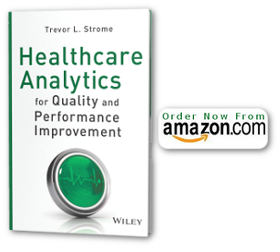Agile software development overview
In the world of software development, the term “agile development” (as defined by Wikipedia) refers to “a group of software development methodologies based on iterative and incremental development, where requirements and solutions evolve through collaboration between self-organizing, cross-functional teams.” Recently, the term “agile analytics” has emerged, undoubtedly coined to apply the ideals of agile software development to business intelligence. Despite this, there is no clear definition of the term. In his article “The Elusive Definition of Agile Analytics“, Ted Cuzzo narrows in on a definition of agile analytics based discussions with experts in the analytics field.
There is no common “agile analytics process”
Interestingly, there is no set “process” for agile analytics similar to what exists for agile software development (such as Agile Modeling, Open Unified Process, and Scrum). Instead, current thinking around the topic of agile analytics seems to revolve around a series of ideals or principles. To quote from Cuzzo’s article, the ideals around which the concept of agile analytics is evolving consist of:
- Agile analysis lets people analyze data the way they actually think.
- Quick iterations. It’s like agile development in this way.
- Data granular enough to answer unanticipated questions.
- New importance of personal skill, knowledge of the subject, and skill managing data.
- It thrives in organizations that encourage it.
An agile approach is necessary to facility healthcare quality improvement
An agile approach to analytics is necessary in healthcare for many reasons. Health information technology (HIT), the data it creates, and our use of analytics to capitalize on that data, is very much in its infancy. As more information systems come on-line within healthcare organizations, the need for information-informed decision making will continue to grow unabated. This means that the demand for tools such as dashboards, scorecards, reporting, predictive modeling, and simulation will grow too, along with the demand for skilled analytics professionals (see my article on the “Analytics Gap in Healthcare”). With this increase in demand for analytics, traditional approaches to development simply will not be able to keep up with demand.
Healthcare quality management approaches depend on flexibility
The more onerous business intelligence and analytics development approaches typical in some HCO IT shops do not fit in with the more flexible quality management philosophies (such as Lean and Six Sigma) being increasingly adopted in healthcare. For example, Lean Transformation and Plan-Do-Study-Act (PDSA) approaches require flexibility, a willingness to experiment, and a relentless focus on evaluation. When healthcare quality and management teams start quality improvement projects and need data to identify issues, establish baselines, and evaluate outcomes, the requirements for information my evolve rapidly, and will likely require a quick turn-around. In the frenetic environment of healthcare, frequent discussions between analysts and quality management teams along with iterative development of analytics tools are likely to yield the required information quickly and in creative ways. With “agile” approaches, stakeholders can begin to use information sooner even as revisions to reports, dashboards, and other analytic tools undergo revision and enhancement.
Transformation… everywhere!
Healthcare information and the way that information is used are undergoing a transformation in a very large part to support healthcare improvement. As healthcare organizations strive to find safer and more efficient ways to provide effective patient care, healthcare analytics must be agile to help achieve change. Even though there is no hard and fast definition of “agile analytics”, organizations who follow the spirit of the agile approach will likely be able to respond better to the the analytics needs of clinical staff and healthcare leaders in this time of change.

{ 0 comments… add one now }
{ 1 trackback }